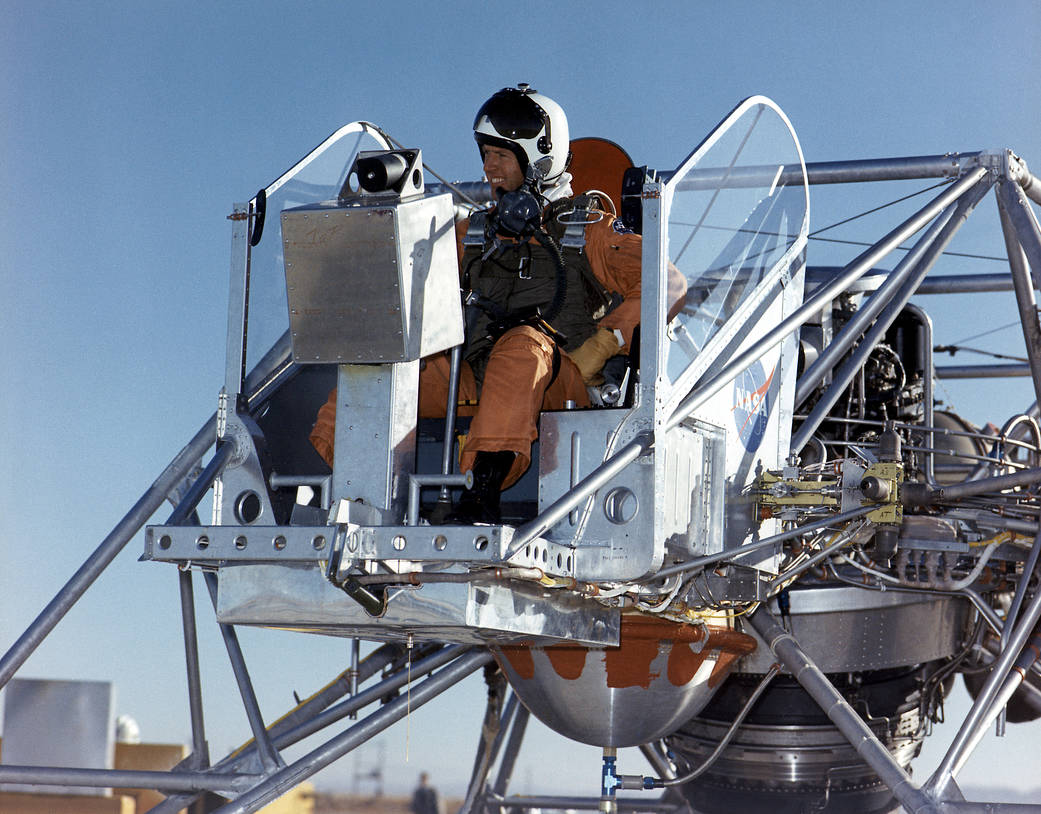
This 1964 photograph shows NASA Pilot Joe Walker in the pilot’s platform of the Lunar Landing Research Vehicle (LLRV) number 1.
When Apollo planning was underway, NASA was looking for a simulator to profile the descent to the moon’s surface. Three concepts surfaced: an electronic simulator, a tethered device, and the ambitious Armstrong Flight Research Center (then NASA’s Flight Research Center) contribution, a free-flying vehicle. All three became serious projects, but eventually the LLRV became the most significant one.
Simultaneously, and independently, Bell Aerosystems Company, a company with experience in vertical takeoff and landing aircraft, had conceived a similar free-flying simulator and proposed their concept to NASA. The challenge was to allow a pilot to make a vertical landing on Earth in a simulated moon environment, one sixth of the Earth’s gravity and with totally transparent aerodynamic forces in a “free flight” vehicle with no tether forces acting on it.Image Credit: NASA


























